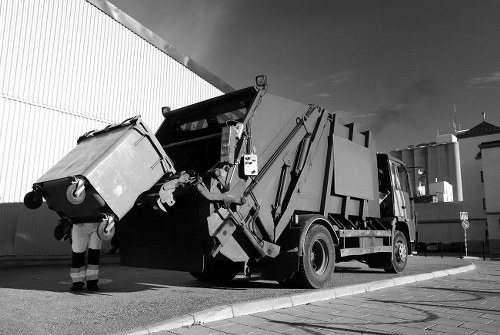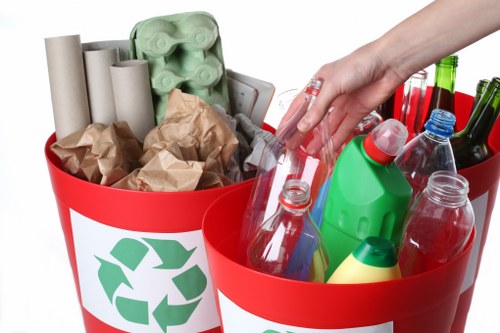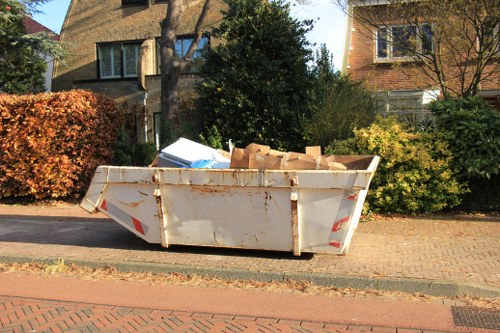Effective Waste Disposal in Furniture Collection
Introduction to Furniture Collection and Waste Disposal

Furniture collection plays a crucial role in modern living, offering consumers the convenience of replacing old or damaged pieces with new ones. However, this process inevitably generates waste, raising significant environmental concerns. Proper waste disposal in furniture collection is essential to minimize the ecological footprint and promote sustainable living practices.
In recent years, the focus on sustainability has intensified, pushing both consumers and businesses to rethink their waste management strategies. Effective waste disposal not only helps in reducing landfill accumulation but also contributes to resource conservation through recycling and reuse.
This article delves into the various aspects of waste disposal in furniture collection, highlighting best practices, challenges, and innovative solutions that can lead to a greener future.
The Environmental Impact of Furniture Waste

Furniture waste significantly impacts the environment, primarily through the depletion of natural resources and increased landfill usage. Most furniture is made from materials like wood, metal, and plastics, which require extensive resource extraction and manufacturing processes, contributing to environmental degradation.
Moreover, improper disposal of furniture leads to the release of harmful chemicals and greenhouse gases as materials decay in landfills. For instance, treated wood can leach toxins into the soil and water, posing risks to ecosystems and human health.
Understanding the environmental implications of furniture waste is the first step towards implementing effective disposal strategies. By addressing these issues, we can work towards a more sustainable approach to furniture collection and waste management.
Best Practices for Waste Disposal

Adopting best practices in waste disposal ensures that furniture collection is conducted responsibly and sustainably. Here are some key strategies:
- Recycling: Materials such as wood, metal, and plastic can be recycled to create new products, reducing the need for virgin resources.
- Donation and Reuse: Gently used furniture can be donated to charities or sold second-hand, extending the lifespan of the products and minimizing waste.
- Proper Segregation: Sorting furniture waste by material type facilitates efficient recycling and disposal processes.
- Eco-friendly Disposal Services: Utilizing services that prioritize environmentally responsible disposal methods can significantly reduce the ecological impact.
Implementing these practices requires collaboration between consumers, businesses, and waste management authorities to ensure effective execution and sustainability.
Challenges in Furniture Waste Disposal

Despite the availability of best practices, several challenges impede effective waste disposal in furniture collection:
- Cost Factors: Recycling and proper disposal often incur higher costs compared to traditional landfill methods, discouraging widespread adoption.
- Lack of Awareness: Many consumers and businesses are unaware of the environmental impact of improper disposal and the available sustainable options.
- Logistical Issues: Efficiently collecting, sorting, and processing furniture waste requires robust infrastructure, which may be lacking in some regions.
- Regulatory Barriers: Inconsistent regulations and enforcement can hinder the implementation of standardized waste disposal practices.
Addressing these challenges is crucial for advancing sustainable waste disposal in the furniture industry. Solutions may include incentivizing recycling efforts, enhancing public awareness, and improving waste management infrastructure.
Innovative Solutions and Emerging Trends

Innovation plays a pivotal role in overcoming the challenges associated with furniture waste disposal. Emerging trends and solutions are shaping a more sustainable future:
- Circular Economy Models: Emphasizing the reuse and recycling of materials, the circular economy promotes a closed-loop system where waste is minimized.
- Smart Waste Management Technologies: Advanced technologies, such as AI-driven sorting systems and blockchain for tracking waste streams, enhance efficiency and transparency.
- Eco-friendly Materials: Developing furniture from sustainable or biodegradable materials reduces environmental impact and facilitates easier disposal.
- Consumer Incentives: Programs that reward consumers for recycling or donating furniture encourage participation in sustainable practices.
These innovative approaches not only address waste disposal challenges but also create opportunities for economic growth and environmental preservation.
Role of Businesses in Sustainable Disposal

Businesses in the furniture industry have a significant role to play in promoting sustainable waste disposal. By integrating eco-friendly practices into their operations, companies can lead the way towards a greener future:
- Design for Sustainability: Crafting furniture with end-of-life disposal in mind, using recyclable or biodegradable materials, simplifies the recycling process.
- Take-Back Programs: Offering customers the option to return old furniture for recycling or refurbishment encourages responsible disposal.
- Partnerships with Recycling Facilities: Collaborating with specialized recycling centers ensures that furniture waste is handled appropriately.
- Transparency in Supply Chains: Providing clear information about material sourcing and disposal practices builds consumer trust and promotes sustainability.
By adopting these strategies, businesses not only contribute to environmental sustainability but also enhance their reputation and meet the growing demand for eco-conscious products.
Government Policies and Regulations

Government policies and regulations are instrumental in shaping effective waste disposal practices within the furniture industry. Key regulatory measures include:
- Extended Producer Responsibility (EPR): Mandates that producers are accountable for the entire lifecycle of their products, including disposal, incentivizing sustainable design.
- Recycling Targets: Setting specific recycling goals for industries encourages the adoption of efficient recycling practices.
- Waste Disposal Regulations: Enforcing guidelines for the proper disposal of furniture waste ensures consistency and environmental protection.
- Incentive Programs: Offering tax breaks or subsidies for companies implementing sustainable waste management practices promotes industry-wide adoption.
Effective policy frameworks create a conducive environment for sustainable waste disposal, driving both compliance and innovation within the furniture sector.
Consumer Responsibility and Education

Consumers hold significant responsibility in the waste disposal chain, as their choices directly impact environmental outcomes. Educating consumers about sustainable disposal options can lead to more responsible behaviors:
- Awareness Campaigns: Informing the public about the environmental impact of furniture waste and available disposal methods encourages proactive participation.
- Accessible Information: Providing clear guidelines and resources on how to recycle or donate furniture makes the process easier for consumers.
- Encouraging Minimalism: Promoting the idea of buying only what is needed and choosing high-quality, durable furniture reduces overall waste.
- Facilitating Easy Disposal: Offering convenient disposal options, such as curbside pickup for large items, increases the likelihood of proper furniture disposal.
Empowering consumers with knowledge and resources is essential for achieving widespread sustainable waste disposal in furniture collection.
Case Studies: Successful Waste Disposal Initiatives

Several case studies highlight the effectiveness of sustainable waste disposal initiatives within the furniture industry:
- IKEA's Circular Hub: IKEA has launched a circular hub offering repair services, resale of used furniture, and recycling options, significantly reducing waste.
- Patagonia's Worn Wear Program: Although primarily an outdoor clothing brand, Patagonia's approach to recycling and refurbishing products provides valuable insights applicable to furniture collection.
- Herman Miller's Take-Back Program: This furniture manufacturer offers clients the option to return old products for recycling, demonstrating corporate responsibility.
- Local Community Initiatives: Various municipalities have introduced furniture recycling events and drop-off centers, facilitating community-based waste disposal efforts.
These examples illustrate that with commitment and innovative strategies, effective waste disposal in furniture collection is achievable and beneficial for both businesses and the environment.
The Future of Furniture Waste Disposal

The future of furniture waste disposal is poised to be shaped by advancements in technology, evolving consumer behaviors, and strengthened regulatory frameworks. Anticipated developments include:
- Advanced Recycling Technologies: Innovations such as chemical recycling and automated sorting systems will enhance the efficiency and effectiveness of furniture waste processing.
- Increased Adoption of Circular Economy: More companies will embrace circular economy principles, fostering sustainable production and consumption patterns.
- Smart Furniture Design: Integrating smart technologies into furniture design can facilitate easier disassembly and recycling.
- Global Collaboration: International partnerships and knowledge sharing will drive uniform standards and best practices in furniture waste disposal.
As these trends unfold, the furniture industry will continue to evolve, prioritizing sustainability and responsible waste management to meet the demands of a greener future.
Conclusion

Waste disposal in furniture collection is a multifaceted challenge that demands collaboration, innovation, and commitment from all stakeholders involved. By adopting best practices, overcoming existing challenges, and embracing innovative solutions, the furniture industry can significantly reduce its environmental impact and contribute to a more sustainable world.
Consumers, businesses, and governments must work in tandem to implement effective waste management strategies, ensuring that furniture collection processes are both efficient and environmentally responsible. Through collective effort and continuous improvement, we can achieve meaningful progress in waste disposal and pave the way for a sustainable future.
Contact us today to learn more about sustainable waste disposal solutions and how you can make a difference in the furniture industry's environmental footprint.